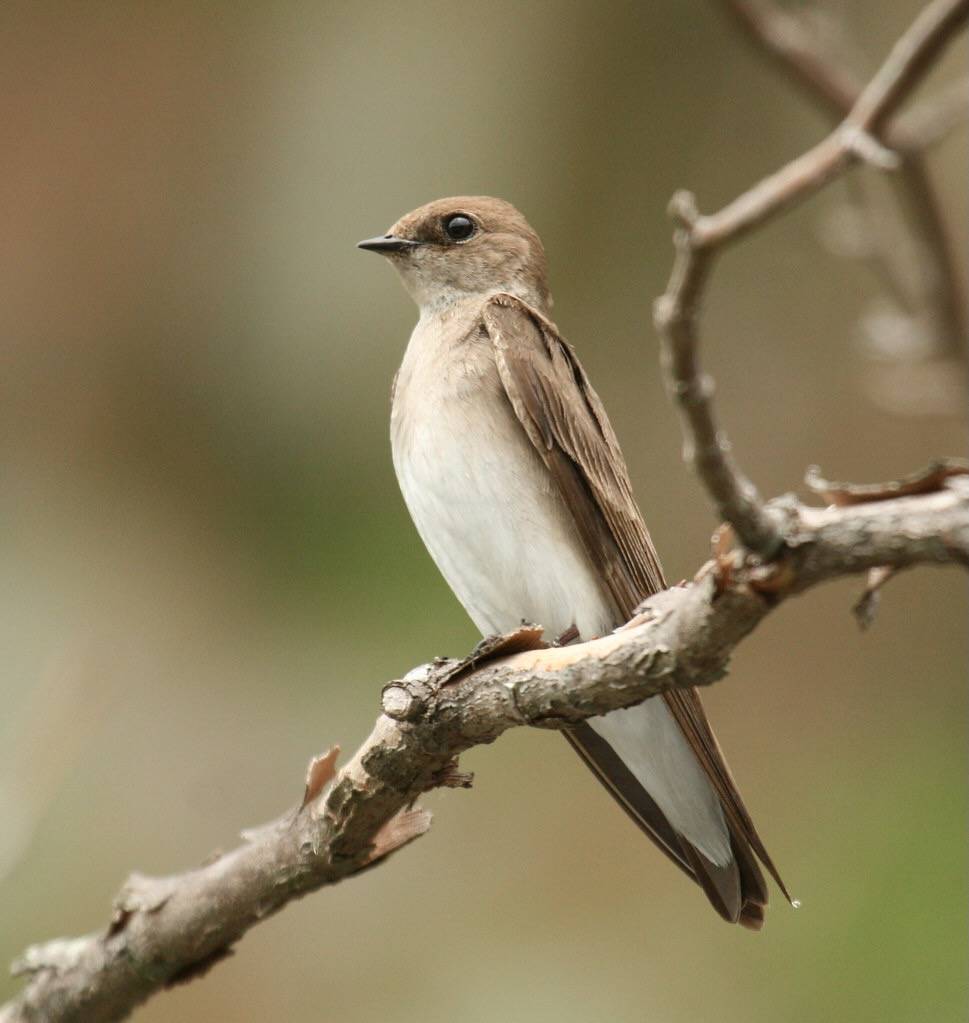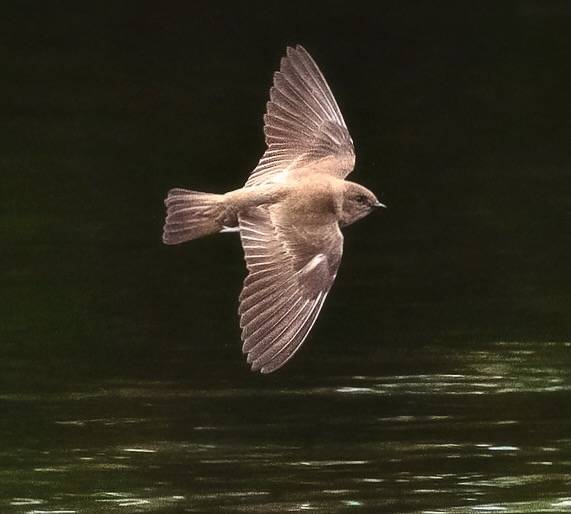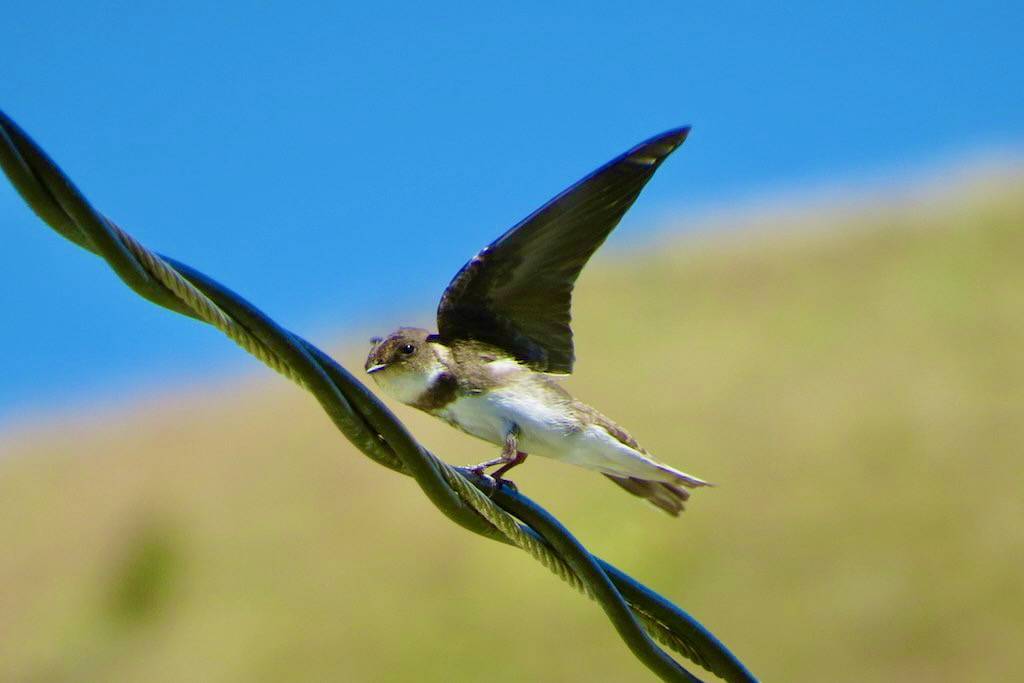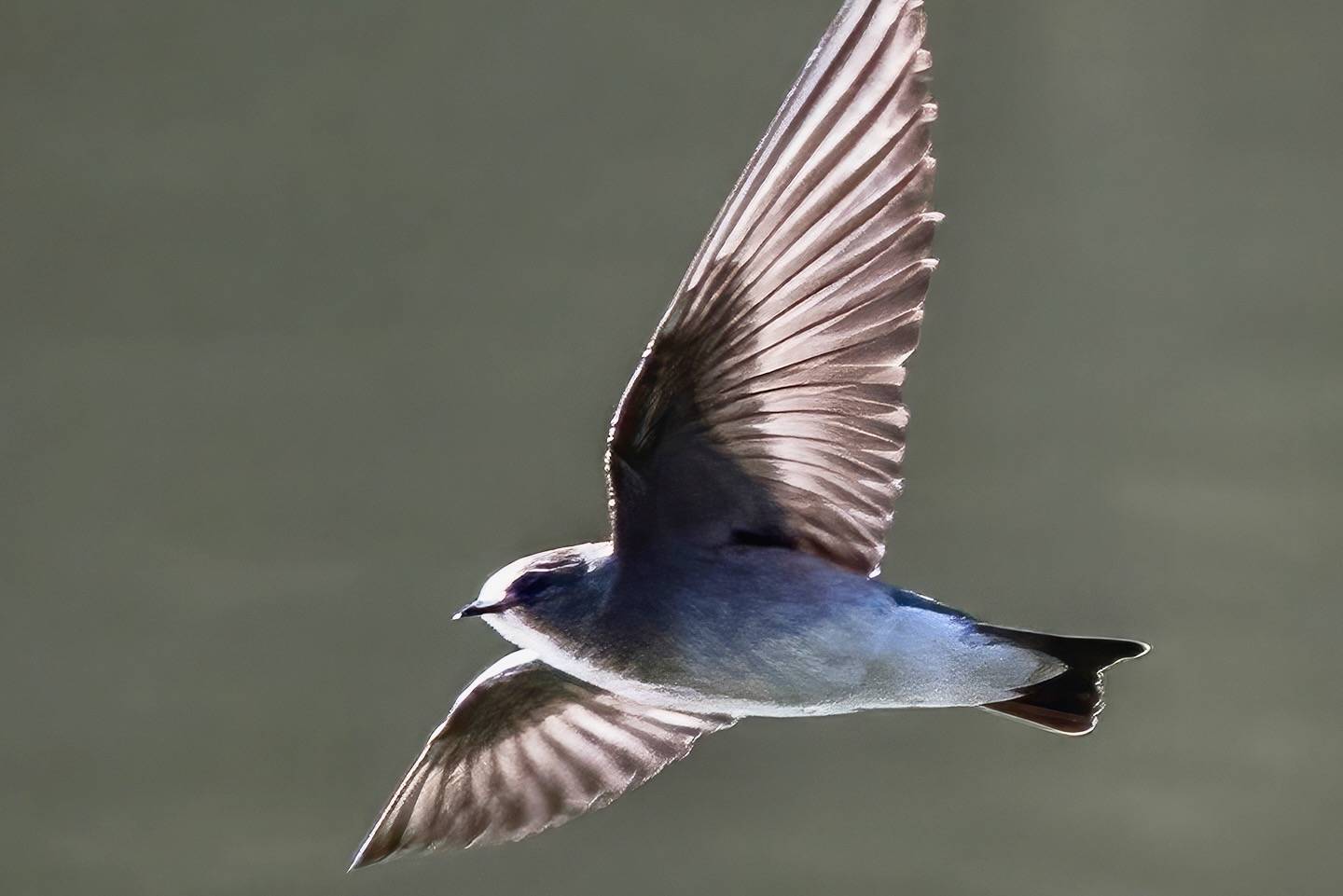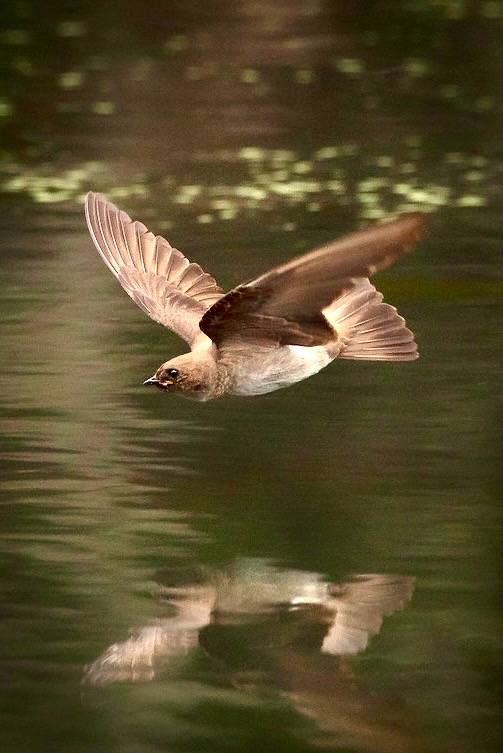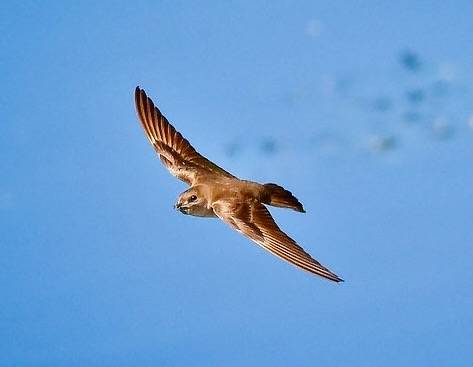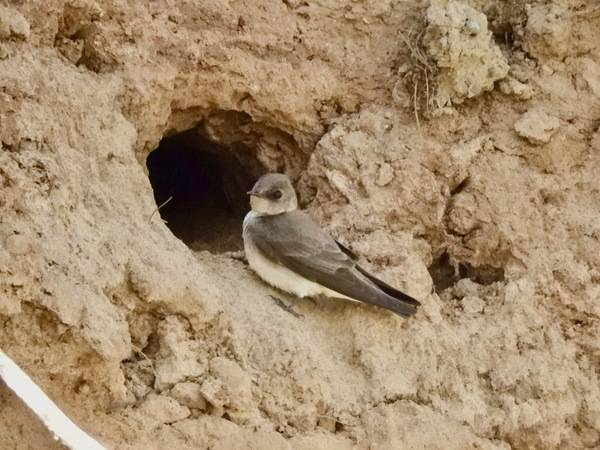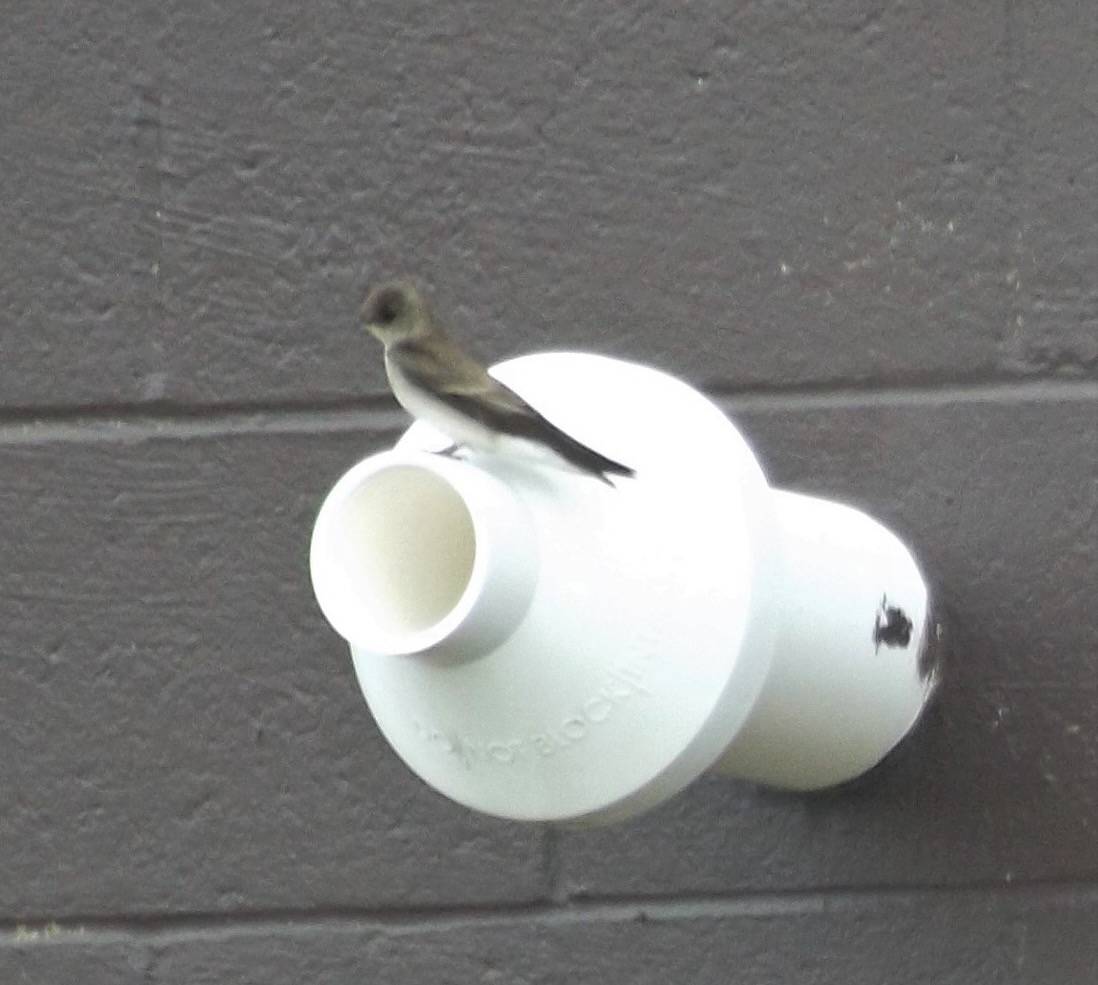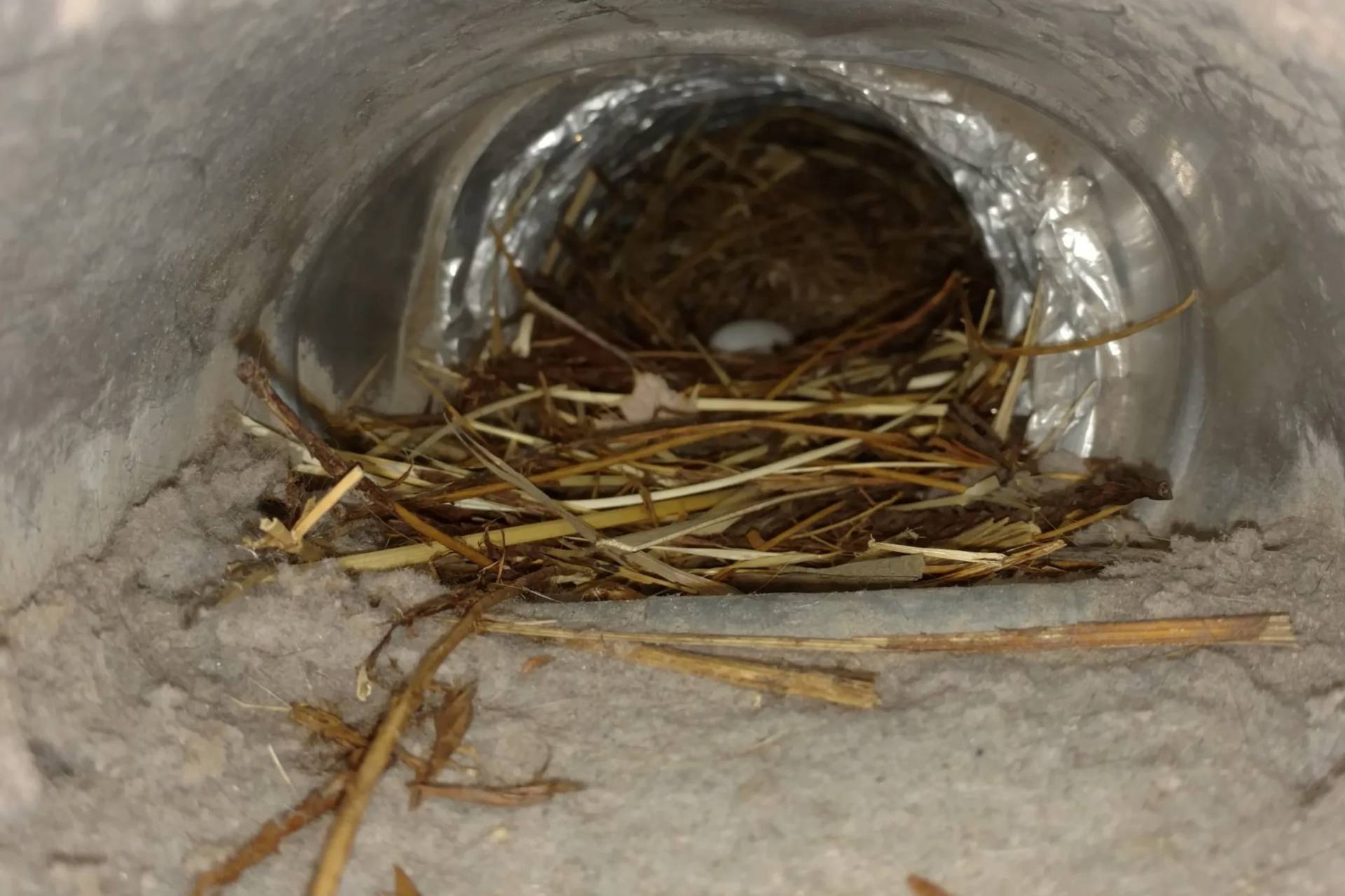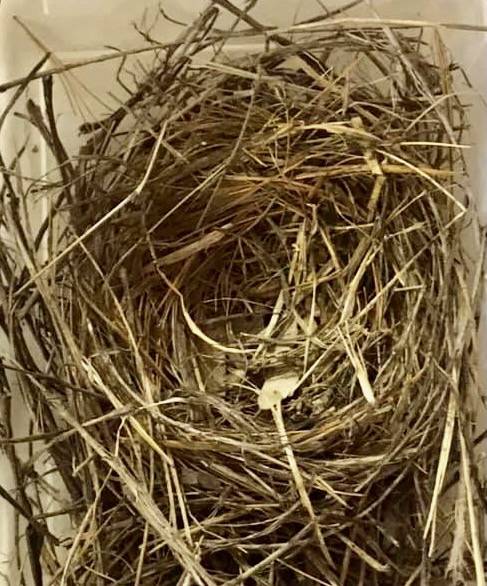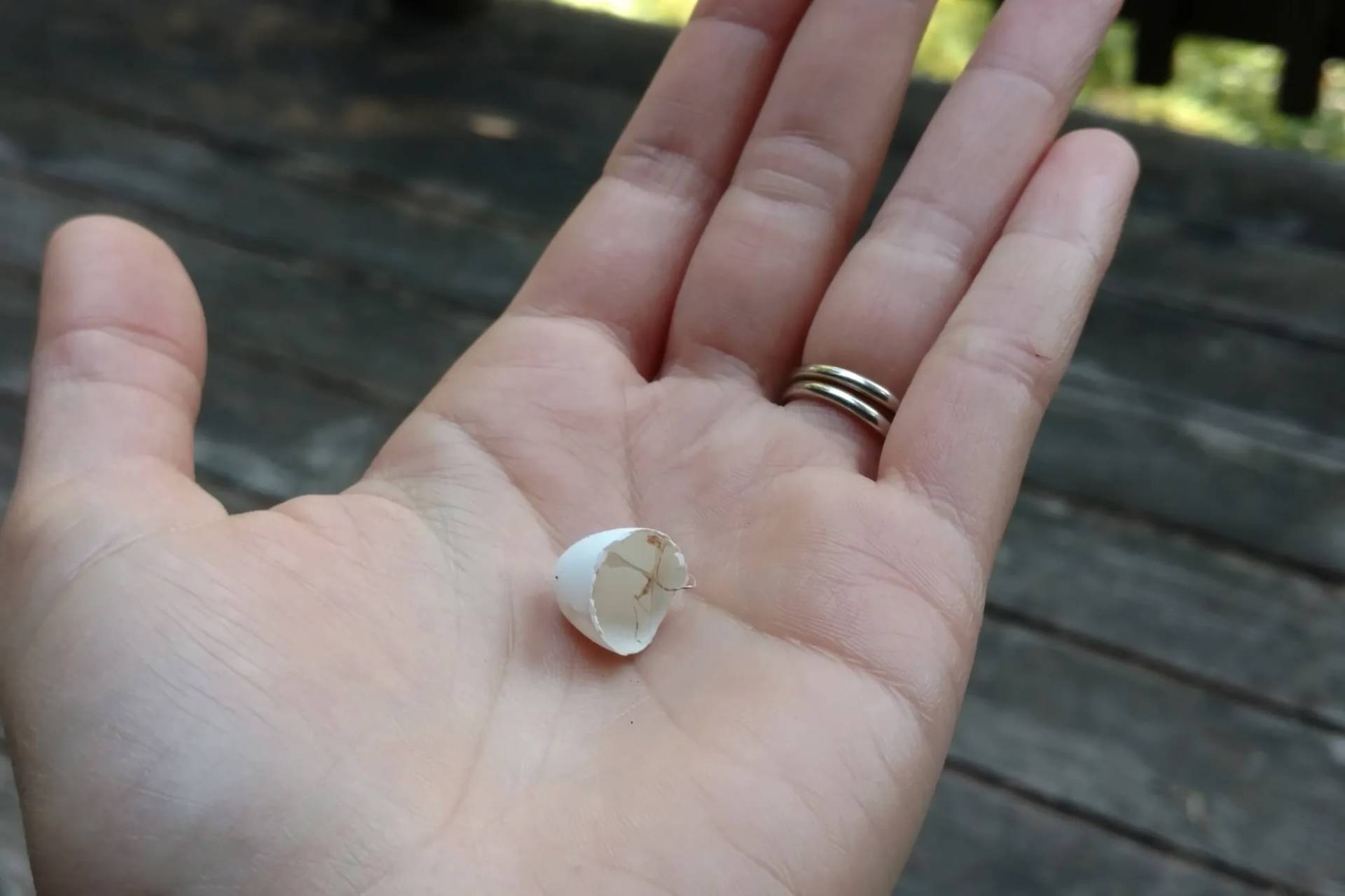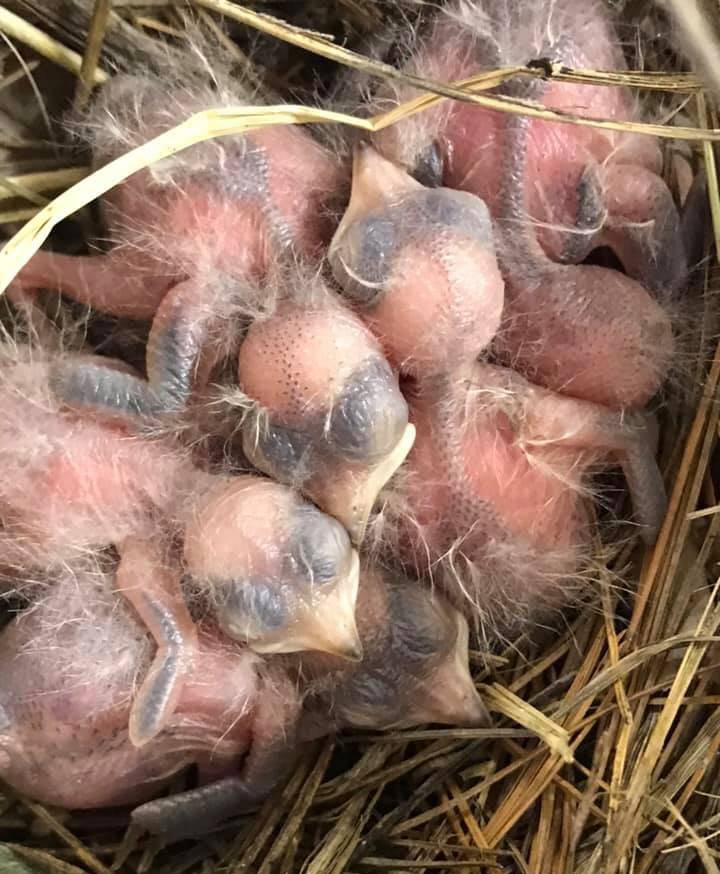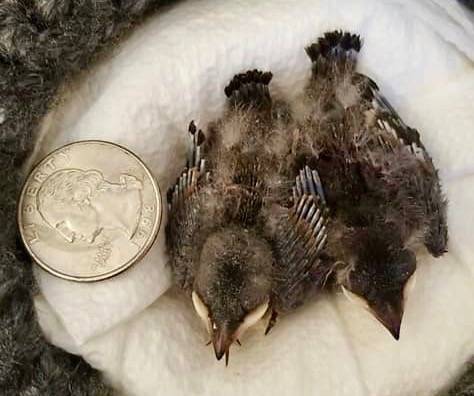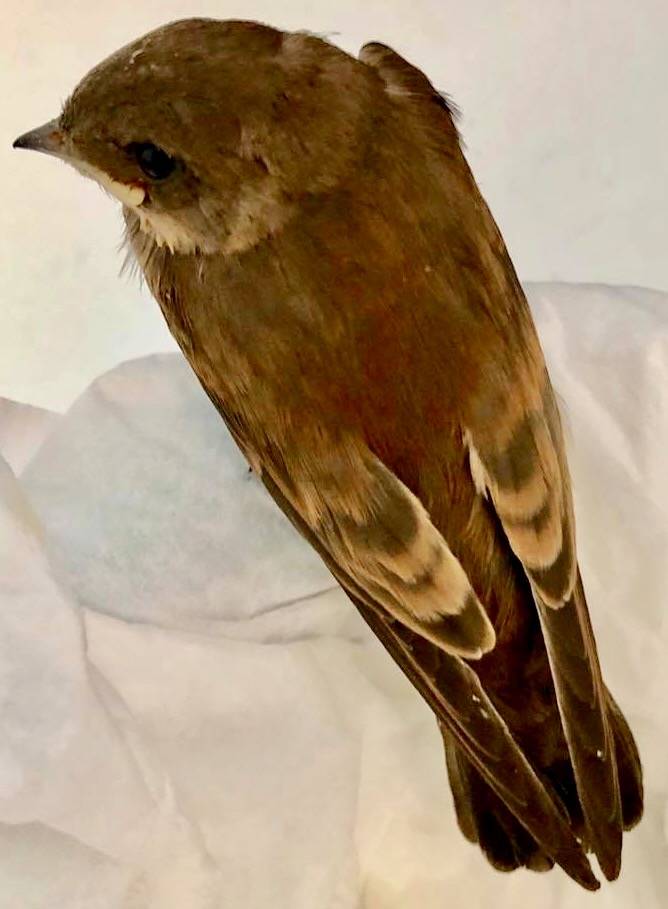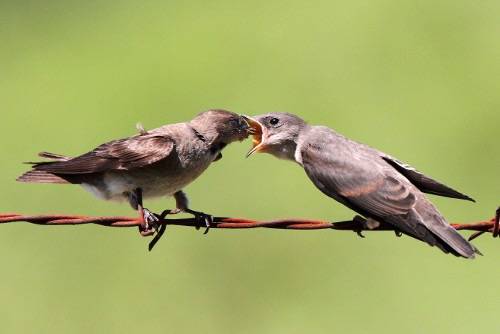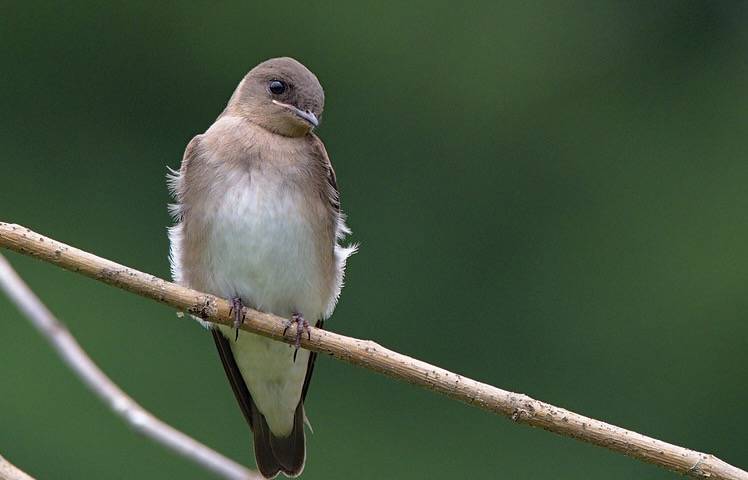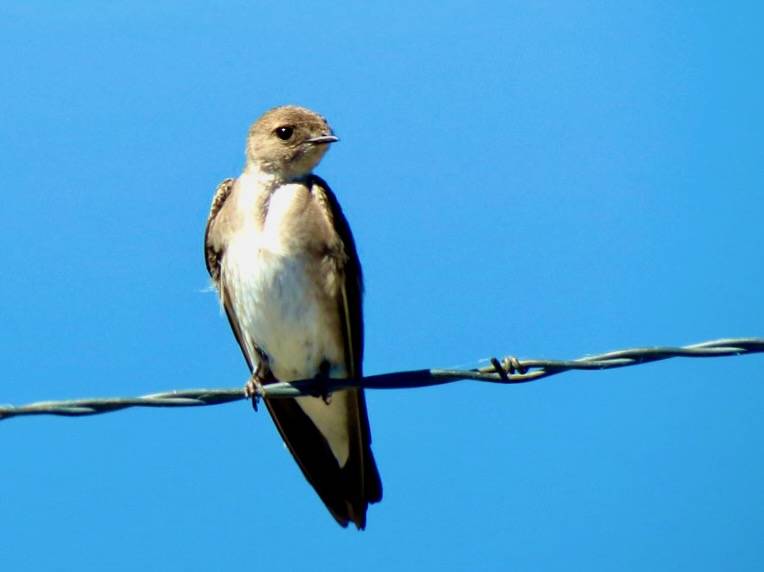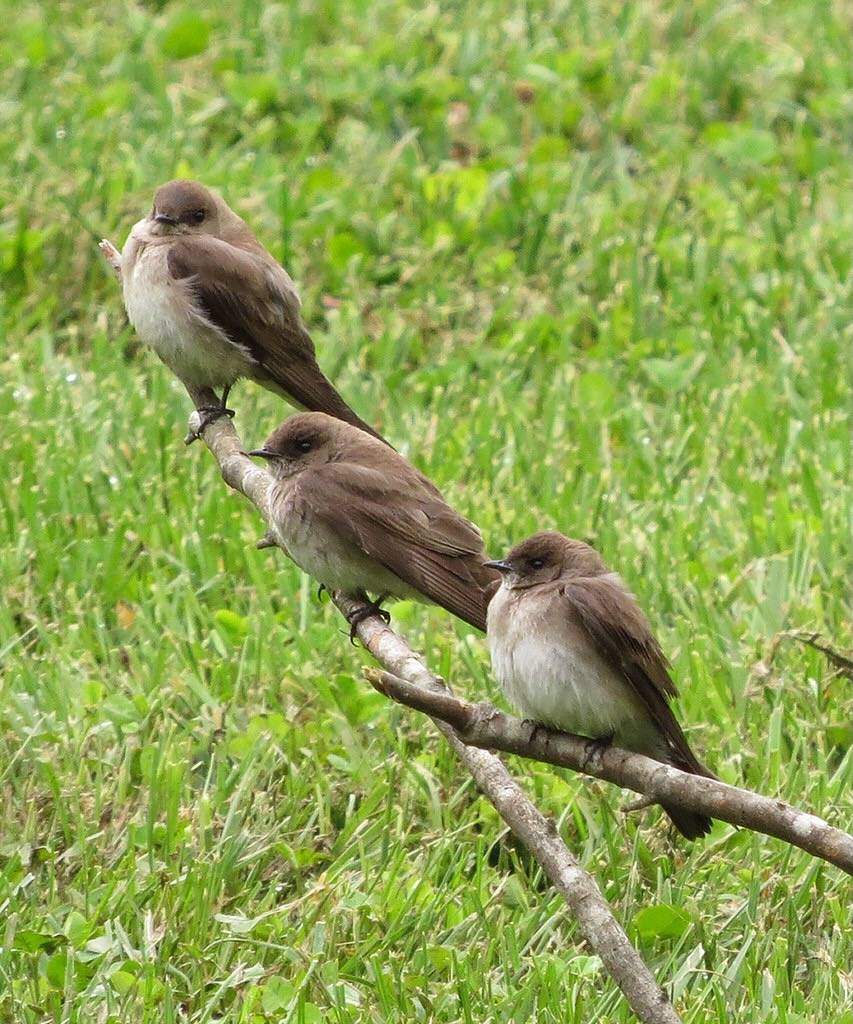Northern Rough-winged Swallow
The Northern Rough-winged Swallow probably visits Salter Grove more often than what records would indicate. Usually solitary, its small brown-backed body would be easy to miss at a distance as it glides low over water in pursuit of small flying insects like bees, flies, wasps and winged ants. Either the causeway or the Marsh Trail would provide good vantage points for this aerial feeder when it is in action over North and South Coves.
Although all observations have been from from late-April through mid-August, it is not likely to breed in the park. It prefers to nest in tunnels within steep soil embankments near running water and such habitat does not exist at Salter Grove. However, Northern Rough-winged Swallows have been known to use man-made structures such as gutters, plastic tubes, dryer vents and even the exhaust pipe of a boat--and the park is surrounded by a suburban community.
The "rough-winged" in its common name suggests a wing that is ragged in profile, a feature that ought to help with field identification. Unfortunately for bird watchers, however, the roughness due to the row of tiny hooks on the leading edge of the wing can only be felt on a bird in hand.
If viewed only from the back, the Northern Rough-winged Swallow can easily be confused with the Bank Swallow which also has an all brown back. However, the Bank Swallow is smaller and additionally has a distinct brown breast band on a white breast. In contrast, the larger Rough-winged Swallow has a dusky throat that grades into a dingy breast without any additional markings. Both species nest in soil embankments but the Rough-winged Swallow is a solitary nester whereas the Bank Swallow tends to nest in large colonies.
The Rough-winged Swallow breeds in North America from southern Canada to southern United States. Individuals breeding in the southern portion of its range do not venture far afield after fledging young. However, individuals breeding further north migrate to winter along the Gulf coast, Central America, and the Caribbean. Although mostly solitary during the breeding season, large flocks form during migration and roost together.

